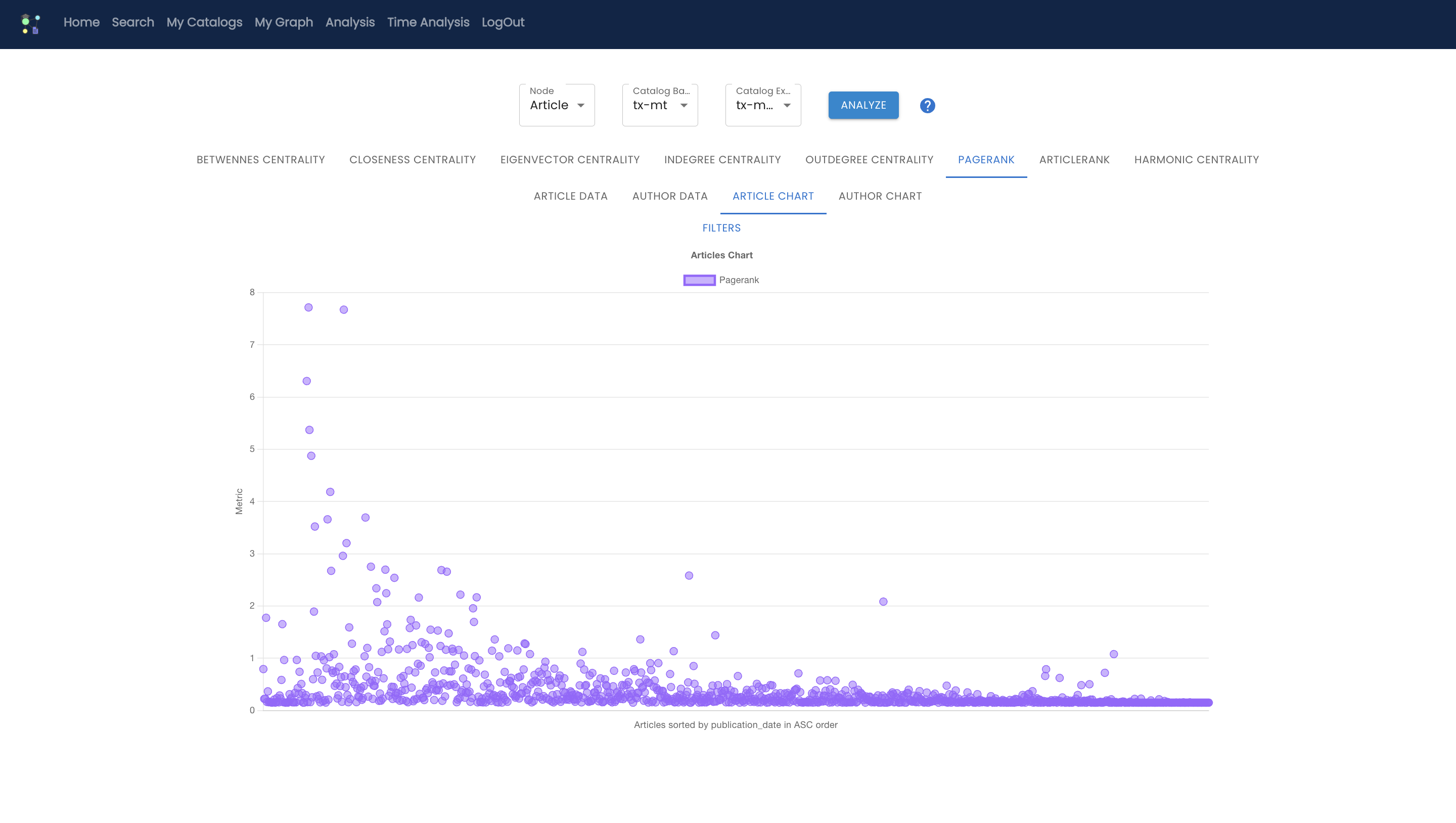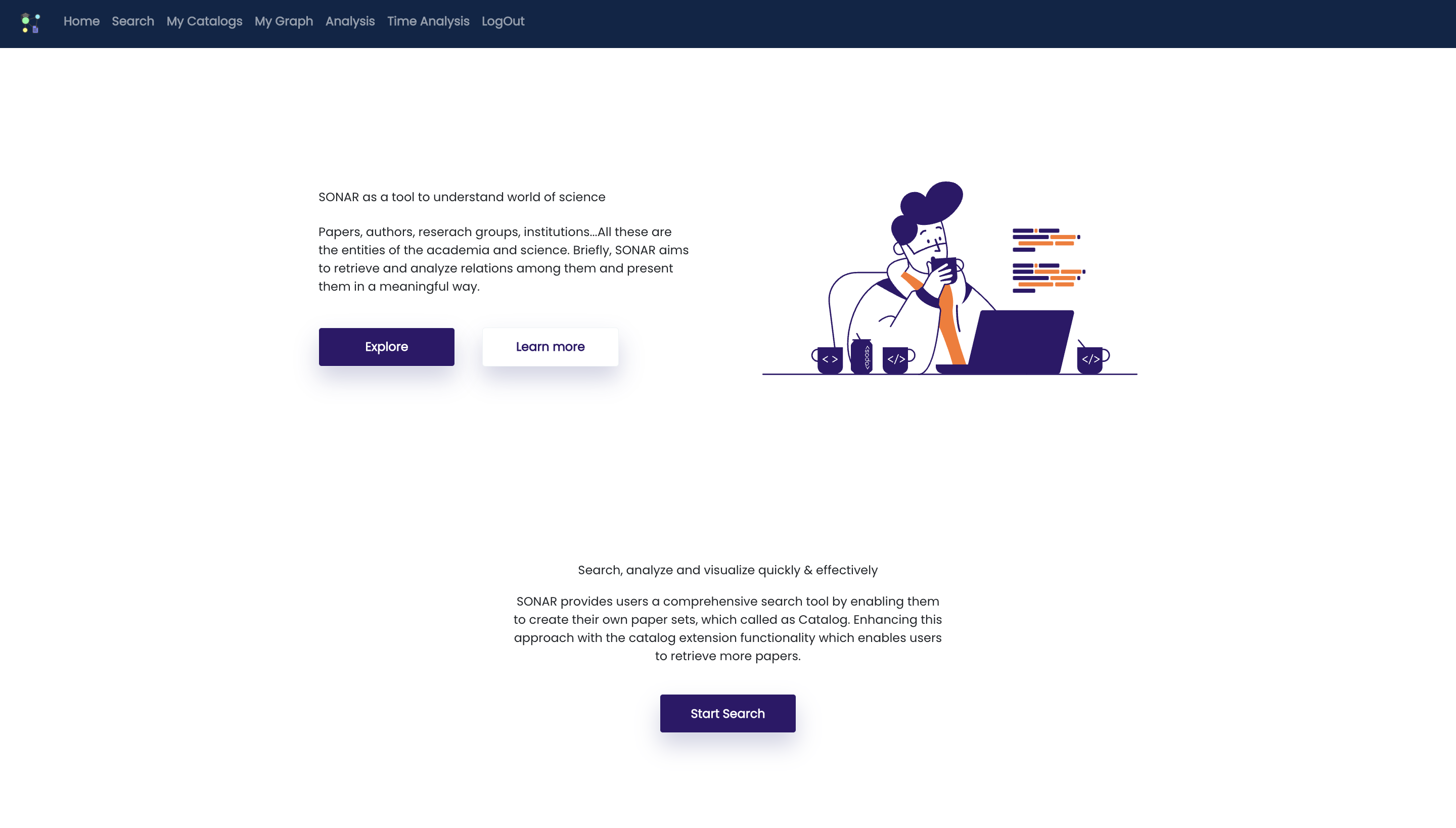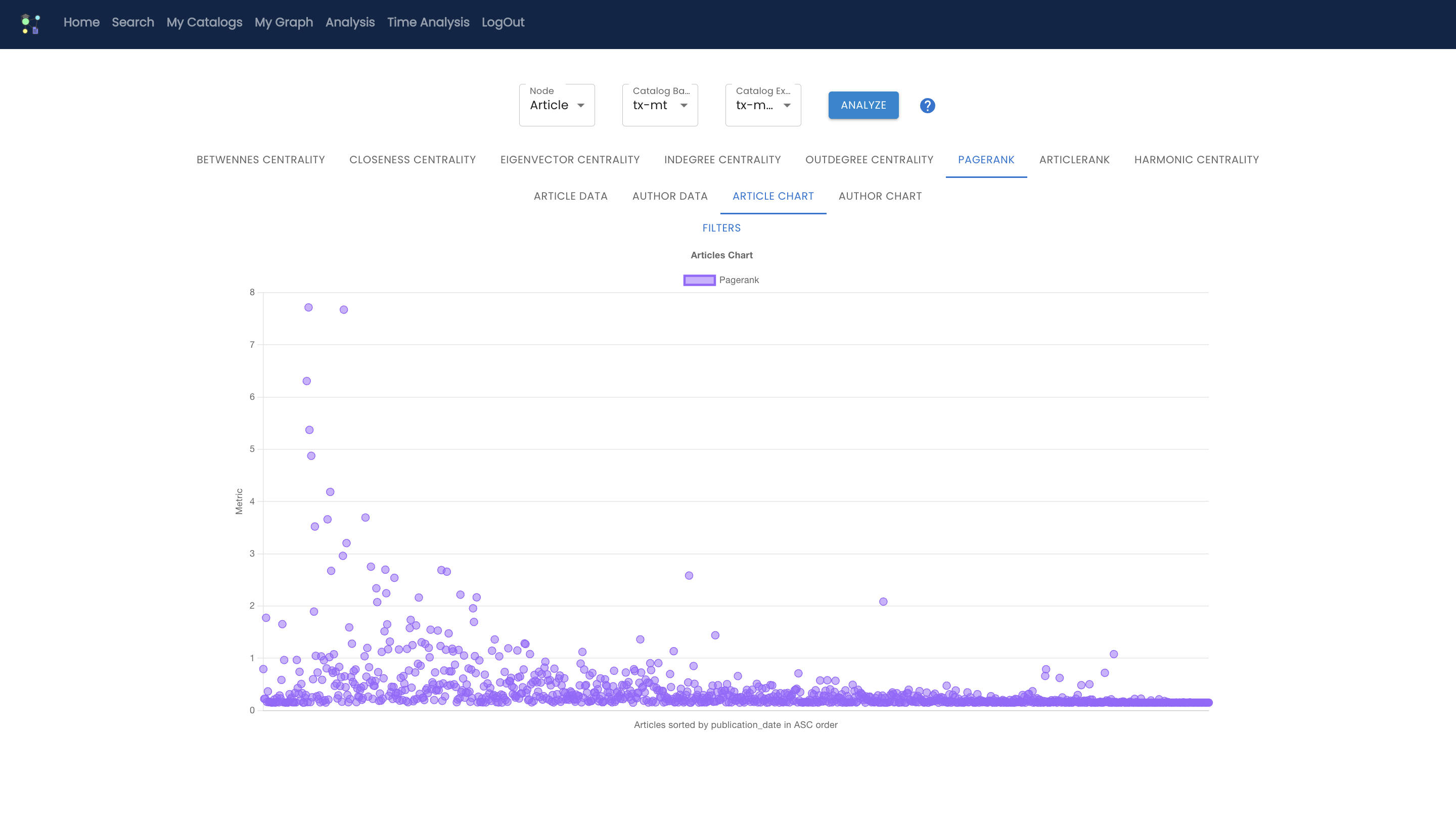SONAR
A Helpful Tool for Academia, Awarded by Bogazici University Computer Engineering Department
Github Page
◦ Analysis of the scholarly network using graph theory and relevant metrics
◦ A tool with Graph UI for researchers to explore scholarly network in an efficient way for article recommendations, finding research groups, literature review, etc
Today, many articles are published by many organizations and researchers. It has become very difficult to follow up-to-date research published in a certain academic field. In addition to all these, when we also consider the interrelationship of academic studies in different fields, we see a wide network. In our project, Social Network Analysis on Research, we aim to create a publicly available web application/tool that showcases these relationships and uses them in a specific domain. In this way, we think that everyone, from undergraduate students to university professors, will have the chance to examine and analyze academic knowledge in a particular field. Seeing which academic writers have participated in such studies, examining the connections between citations, and seeing the clusters formed are supportive of academic studies.
Identifying rapidly developing sub-disciplines, seeing influential authors in a particular academic field, or analyzing the reflection of a current issue in academia are some of the possible outcomes within the academic environment. One of these current issues is naturally COVID-19. A time-dependent graph and analysis can be created on COVID-19 using the tool. In the last few years, the publicly presented COVID-19 graph can explain which articles, authors, organizations, or journals in academia have been effective on this subject, in conjunction with their relations with each other.




Social Network Analysis is a method used to derive meaningful information on many datasets showing graph structure. In this direction, we conducted a literature survey to understand how it is used in different fields. ”Social Network Analysis: Methods and Applications” [2] has been very influential in shaping our basic ideas about Social Network Analysis. ”Models and Methods in Social Network” [1], which is also its sequel helped us to understand what skill sets we need to progress within our project. We continued to direct our research in line with cluster analysis and graph theory. Especially, we have focused on the meaning of graph metrics in our research graph. Additionally, we have benefited from works such as ”On the Correlation between Research Performance and Social Network Analysis Measures Applied to Research Collaboration Networks” [6] and ”Polarized public opinion responding to corporate social advocacy: Social network analysis of boycotters and advocators” [5] helped us get better insight into the meaning and usage of our metrics as well as helped us think about questions that we may want to do research on. Additionally, works on the topological structure of social networks such as ”Graph pattern matching revised for social network analysis” [3] helped us understand the technical methodology used in doing research on social network analysis. As a result, we have observed that social network analysis is a method that is widely used in different domains, however, analyzing authorship and citation graph in terms of their domains can help to uncover the dynamics of research graphs and also academia.
The Django server is deployed in an EC2 instance using Amazon Web services. Also, the Postgresql server is deployed in another EC2 Server. Digital Ocean Droplet is used for Graph Database Neo4j Server. The Django server is communicating with both of the database servers.
REFERENCES
[1] L. Rossoni, “Models and methods in social network analysis,” 2006.
[2] S. Wasserman and K. Faust, “Social Network Analysis: Methods and Appli- cations,” 1994.
[3] W. Fan, “Graph pattern matching revised for social network analysis,” 2012.
[4] K. Lo, L. L. Wang, M. Neumann, R. M. Kinney, and D. S. Weld, “S2ORC: The Semantic Scholar Open Research Corpus,” 2020.
[5] H. Rim, Y. Lee, and S. Yoo, “Polarized public opinion responding to corpo- rate social advocacy: Social network analysis of boycotters and advocators,” Public Relations Review, vol. 46, p. 101869, 2020.
[6] A. Abbasi and J. Altmann, “On the Correlation between Research Perfor- mance and Social Network Analysis Measures Applied to Research Collaboration Net- works,” 2011 44th Hawaii International Conference on System Sciences, pp. 1–10, 2011.
[7] Z. Kraljevic et al., “Multi-domain Clinical Natural Language Processing with MedCAT: the Medical Concept Annotation Toolkit,” Artificial intelligence in medicine, vol. 117, p. 102083, 2020.
[8] O. Bodenreider, “The Unified Medical Language System (UMLS): integrating biomedical terminology,” Nucleic acids research, vol. 32 Database issue, pp. D267-70, 2004.